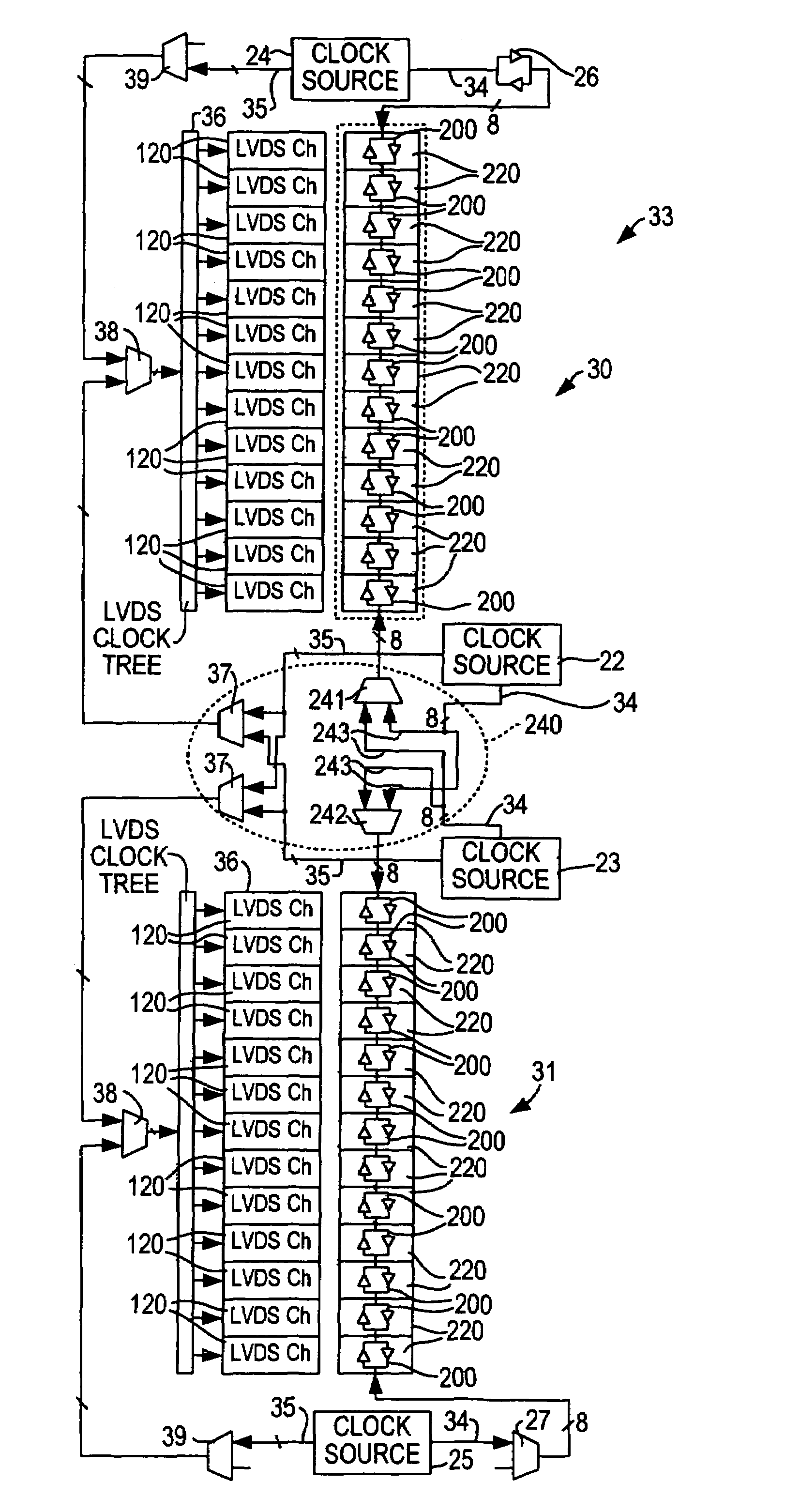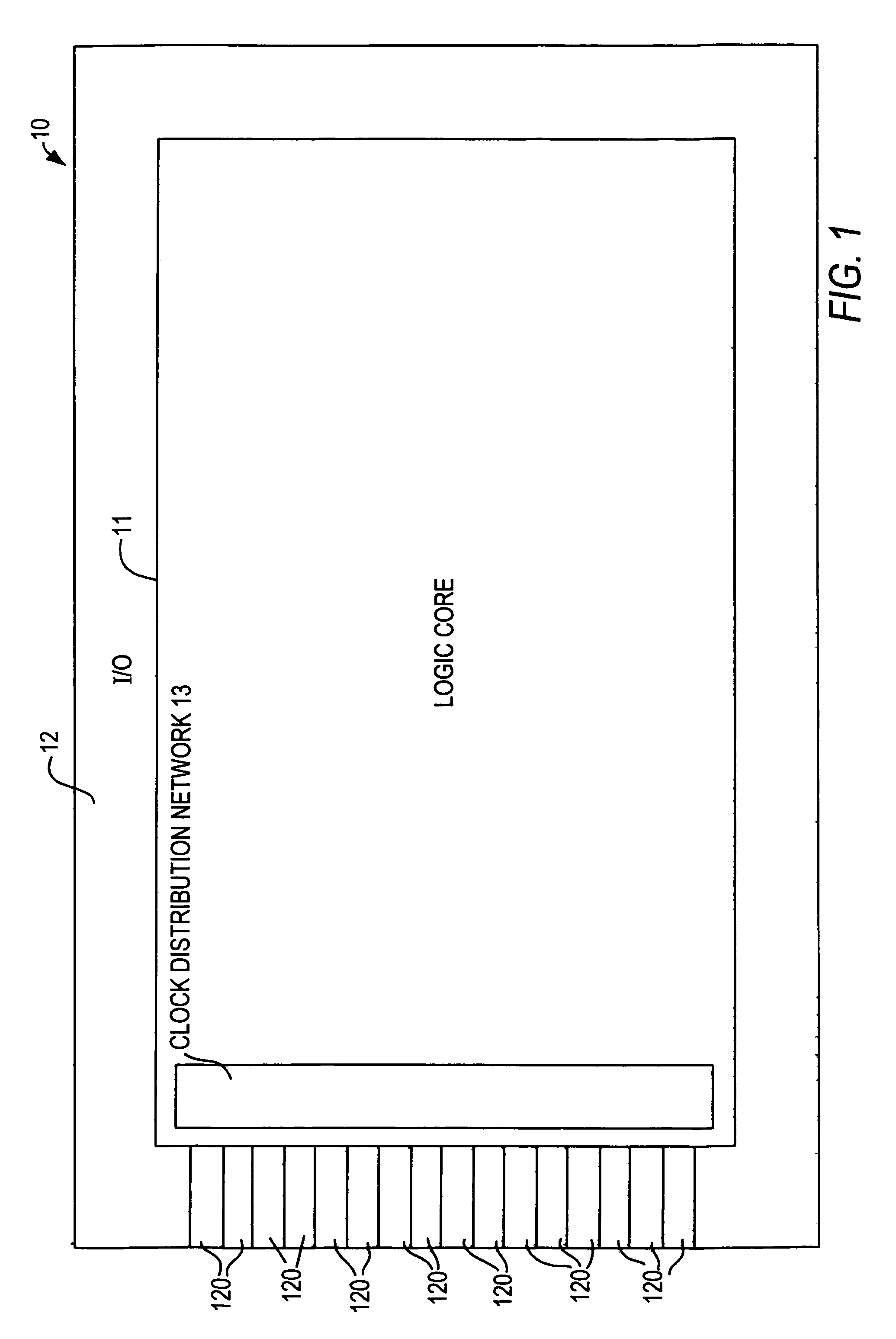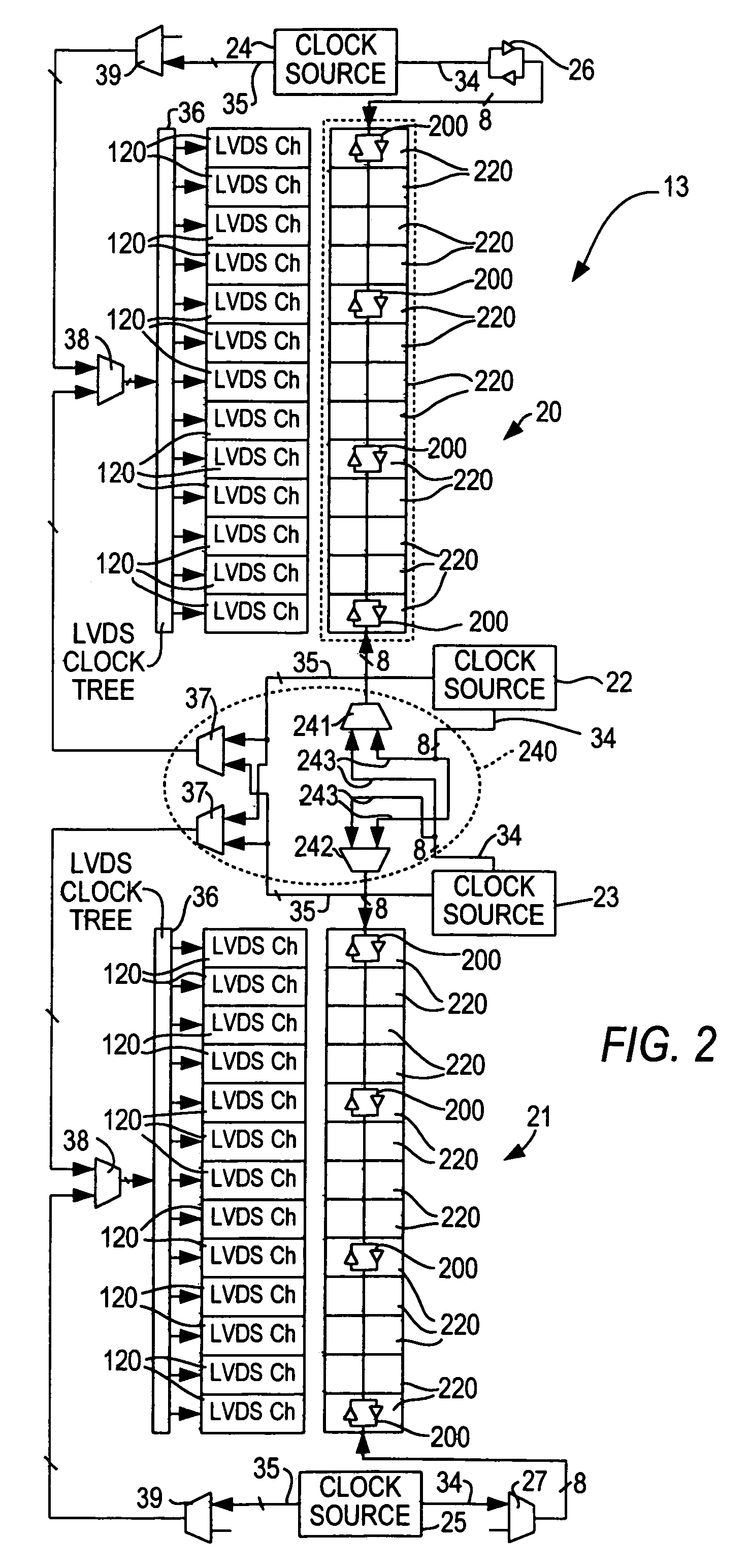Configurable clock network for programmable logic device
a programmable logic and clock network technology, applied in the direction of generating/distributing signals, pulse techniques, instruments, etc., can solve the problems of high chip area cost, high power cost of implementation, and limited flexibility in assigning a particular clock source to a particular channel, so as to achieve the effect of not exceeding the area or power cos
- Summary
- Abstract
- Description
- Claims
- Application Information
AI Technical Summary
Benefits of technology
Problems solved by technology
Method used
Image
Examples
embodiment 33
[0027]Because the tristatable buffers 200 are located at every fourth channel 220 in the embodiment shown in FIG. 2, if the user desires to segment either of clock distribution network portions 20, 21 into two clock buses, the user would be limited as to where those divisions could be made, and therefore as to how many of channels 220 could be assigned to each of those two clock buses. In the alternate embodiment 33 of FIG. 3, however, tristatable buffers 200 are located at each channel 220. Therefore, the user can segment each of clock network distribution portions 30, 31 at a point between any two channels, as may be desired.
[0028]It can be seen that in FIGS. 2 and 3 that in embodiments 13, 33, it may be possible in one configuration to have all channels 220 on a single clock bus connected to one of clock sources 22, 23. In a second configuration, it is possible to have all of clock distribution network portion 20, 30 be one clock bus connected to any one of clock sources 22, 23, ...
embodiment 43
[0035]As in the embodiments of FIGS. 2 and 3, above, in embodiment 43 of FIG. 4, a channel or group of channels could be skipped and the clock signal passed through to adjacent channels. However, in this embodiment, if any one of tristatable buffers 200 is tristated, then no channel beyond that point would receive clock signal. Thus, in this embodiment a tristatable buffer 200 would be tristated only when it is desired to skip all channels beyond that point. Preferably, in such a case, the circuitry (e.g., a passgate) discussed above would be used to force the unused clock conductors to a known state to prevent unnecessary power consumption.
[0036]Thus it can be seen that in accordance with the present invention, a single bus can be used to conduct multiple clock sources to different channels. Because each of these sources is actually, as discussed above, multiple (e.g., eight) phases of a single clock, the invention provides a significant savings in the number of bus conductors that...
PUM
 Login to View More
Login to View More Abstract
Description
Claims
Application Information
 Login to View More
Login to View More - R&D
- Intellectual Property
- Life Sciences
- Materials
- Tech Scout
- Unparalleled Data Quality
- Higher Quality Content
- 60% Fewer Hallucinations
Browse by: Latest US Patents, China's latest patents, Technical Efficacy Thesaurus, Application Domain, Technology Topic, Popular Technical Reports.
© 2025 PatSnap. All rights reserved.Legal|Privacy policy|Modern Slavery Act Transparency Statement|Sitemap|About US| Contact US: help@patsnap.com



